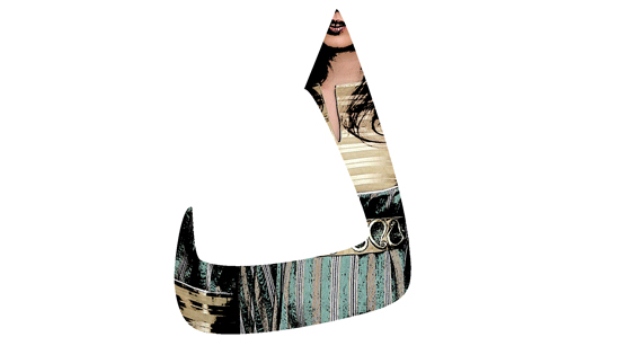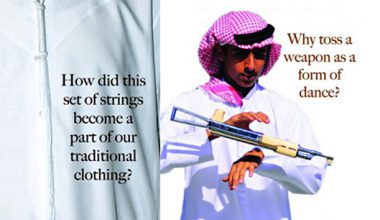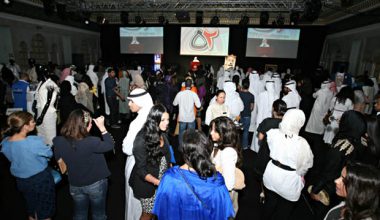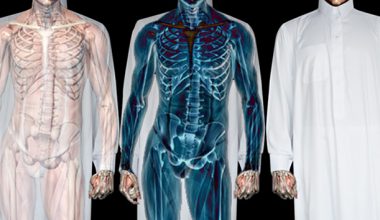
The dara’a, also known as kaftan or jalabeya, is the Kuwaiti and Gulf woman’s traditional attire. Even though the dara’a today is mostly worn as an indoors, from house to house, type of clothing, women still make much of the process of choosing or ordering this garment.
But some years ago, women were limited to long sleeved maxi length dara’as with simple collars and traditional embroidery, today the Kuwaiti woman can wear hers knee-length, short sleeved and even belted. Nowadays, I don’t think a dara’a can be called that. It’s been influenced by Moroccan kaftans, Indian saris, and Japanese kimonos and much more. Some women, like my mother for instance, prefer the belted Moroccan kaftan, while I prefer the less embellished shorter styles. I even bought a dara’a a couple of years ago that had an obi belt to clinch the waist. In addition to that, a friend of mine who was having trouble finding herself dara’as for Ramadan said, “I think I’m going to buy some Diane von Furstenberg printed caftans and wear them with ethnic accessories”. In the past couple of years I’ve even seen girls wear thigh-length dara’as with leggings.

What’s with the change you say? Well, that’s what I’d like to find out. There was a time when dara’as were considered frumpy, boring and outdated. You couldn’t tell the difference between an 80 year-old’s and a 20 year-old’s. Young girls wouldn’t be caught dead wearing one. I was one of them. Now, when Ramadan comes, you have to try and pry them off me.
In my opinion, it was Souad Al-Sabah, the well-known dara’a designer and owner of Sirdab 6, who popularized the short dara’a designs. She started designing ankle length and midi ones while also mixing and matching patterns, fabrics and colors. Souad creates unique creations unlike any other while also employing a favorable pricing strategy that makes her also a favorite of many. Souad has gained a large fan base due to this extremely popular style. Her designs have become an inspiration to many aspiring designers.
Traditionalists (and grandmothers) may frown at the new styles of dara’as, saying that it is a misrepresentation of our culture. However, Kuwait is home to a multitude of nationalities, and we have come to accept their customs, attire and cuisine. Isn’t it only natural that our clothing starts to resemble theirs? Globalization affects dara’as. Who knew?
Due to the diversity of styles available, more and more women have been flocking to exhibitions and stores looking for that perfect piece (or pieces). Artisans from all over the Middle East come to Kuwait to showcase their latest novelties, and Kuwaiti designers rush to turnout their productions before Ramadan. While the majority of the younger female generation prefer to wear dara’as during Ramadan (hence the increase in dara’a exhibitions before the holy month), the older generation usually wear them during house gatherings or under their abayas. Some dara’as are so extravagant that the wearer chooses to go to a formal event in it.
The question here is, is it the short dara’a that has changed the Kuwaiti woman’s philosophy, or is it the increase in diverse styles that caused this? Is it because the short styles are more weather appropriate? Or could it be that because some dara’as are starting to resemble Western clothing, they’re now attracting the younger generation?
– Alya Al-Othman. Images courtesy of Dar Usha.
Previously Published August 2009







